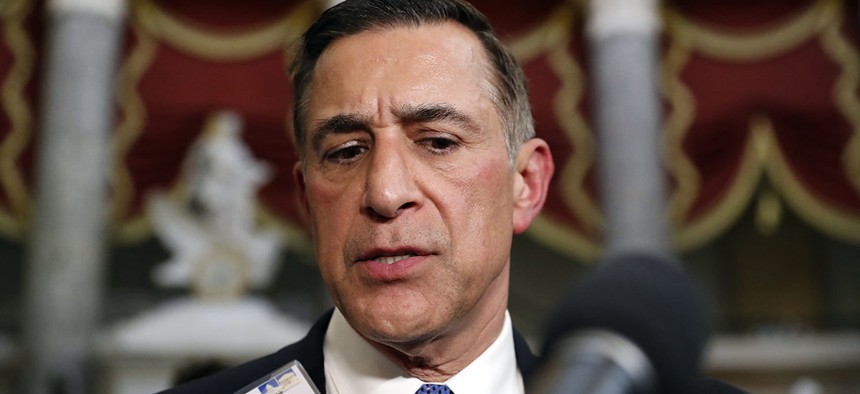Is a Cabinet-Level CIO the Future of Government I.T.?

Rep. Darrell Issa, R-Calif. Alex Brandon/AP
That person would lead “a legion of people” who could support the technology needs of other agencies.
The push to purge out-of-date, unsecure IT systems from the federal government has a least one White House adviser wondering whether services should be consolidated into a single agency.
Rep. Darrell Issa, R-Calif., told the DATA Act Summit audience in Washington that White House Senior Adviser Jared Kushner is grappling with “one big question we all know the answer to”: Should IT be provided to agencies as a corporate service?
“We can look at everything as a service and it’s a service by a consolidated organization,” Issa said Thursday, noting it’s an aspirational idea at this point. Roughly, a cabinet-level chief information officer to lead “a legion of people” who could support the technology needs of other agencies.
» Get the best federal technology news and ideas delivered right to your inbox. Sign up here.
“That doesn’t exist today,” Issa said. “But anyone in this room who’s looking at where the DATA Act allows us to go says that it should.”
The Digital Accountability and Transparency Act, which Issa supported, mandated a radical transformation of how agencies report spending data and allows the public unprecedented view into the government’s finances. Agencies across government, lead by the Treasury Department and the Office of Management and Budget, had to determine a common way to report spending data and house it in an open (and downloadable) format on USAspending.gov.
In May, agencies reported the first quarter of data to the site—an effort that took three years of implementation and years before that to get the bill into shape.
“It’s very hard to move the federal government as an entity forward on any one thing,” said Dave Lebryk, fiscal assistant secretary of the Treasury Department. Showing taxpayers how their money was spent motivated the teams.
The next steps are continuing to improve the quality of data and using it to make decisions, Lebryk said. Agency staff may tap the data to measure performance, Congress and oversight organizations could use it to detect fraud or potential savings, and state and local governments could use it to track grants and other funding.
Another crucial step will be encouraging outside groups and people outside the Beltway to use the spending data, said Ann Ebberts, CEO of the Association of Government Accountants.
“This is still data; it’s not information yet to them,” she said.






